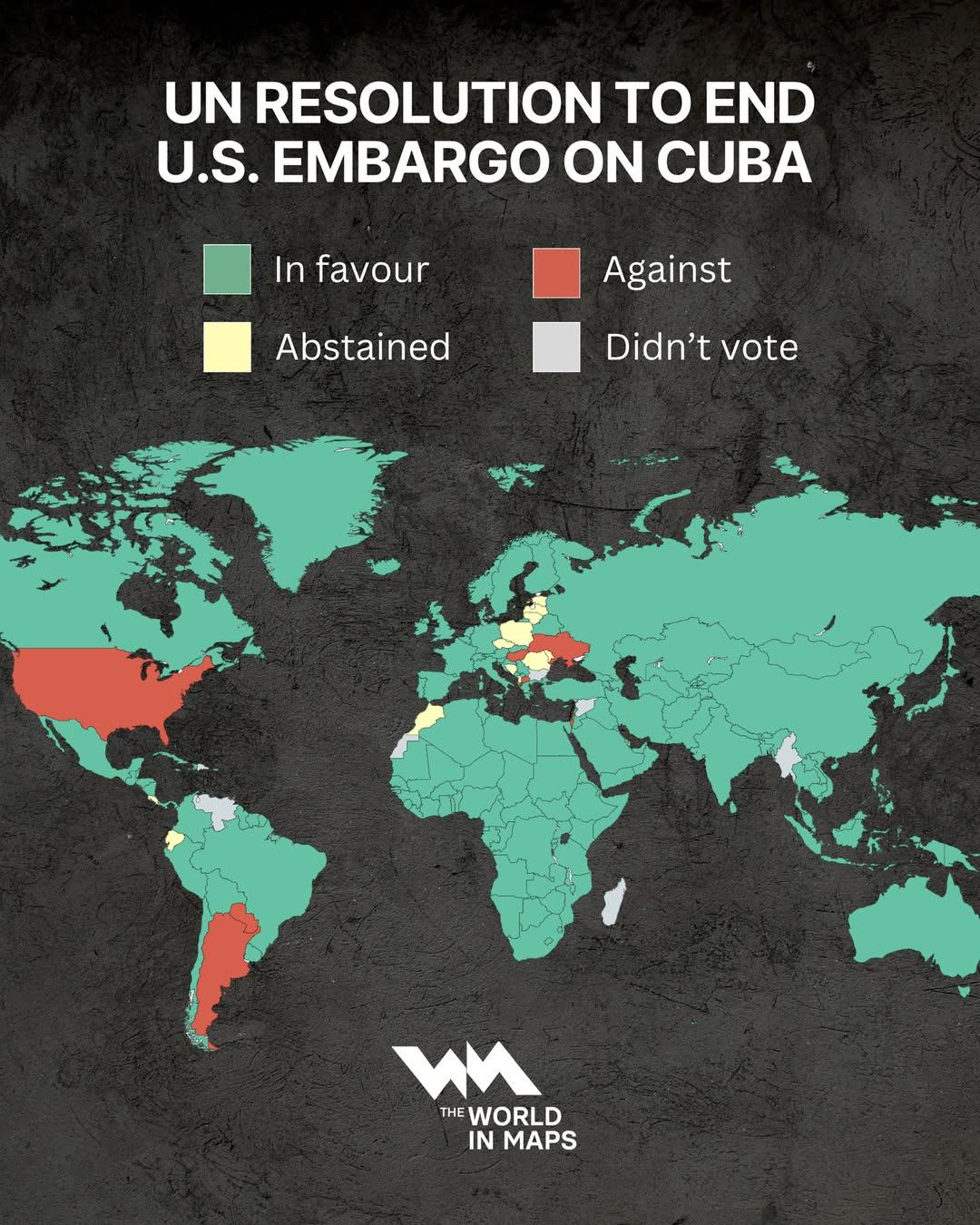

Alex Cartwright
Senior Cartographer & GIS Specialist
Alex Cartwright is a renowned cartographer and geographic information systems specialist with over 15 years of experience in spatial analysis and data...
Geographic Analysis
What This Map Shows
The map titled "UN Vote to End US Embargo Against Cuba, October 29, 2025" visualizes the voting results from the United Nations General Assembly regarding the longstanding embargo imposed by the United States on Cuba. This vote is significant as it reflects the international community's stance on economic sanctions and diplomatic relations affecting Cuba. The map delineates countries that voted in favor, those that opposed, and those that abstained, providing a clear picture of global sentiment towards this contentious issue.
Deep Dive into the US Embargo Against Cuba
The US embargo against Cuba is more than just a diplomatic disagreement; it is a complex historical narrative rooted in Cold War tensions and political ideologies. Instituted in 1960 and expanded in 1962, the embargo has aimed to exert economic pressure on the Cuban government and limit its capacity to engage in international trade. Over the decades, this embargo has led to significant economic challenges for Cuba, impacting everything from healthcare and education to infrastructure and food security.
Interestingly, the UN General Assembly has voted annually since 1991 to call for the end of the embargo, with the vast majority of member states consistently supporting this resolution. In the latest vote in October 2025, it was noteworthy that a significant number of countries reaffirmed their opposition to the embargo, viewing it as an infringement on Cuba's sovereignty and human rights.
In the backdrop of this political landscape, the implications of the embargo extend beyond just Cuba. They also affect international trade dynamics, particularly in Latin America and the Caribbean. Countries like Venezuela and Nicaragua, which have historically aligned with Cuba, often find themselves entangled in similar diplomatic and economic pressures from the US.
Moreover, the embargo has led to a thriving black market in Cuba, where goods and services are traded under the radar. This has given rise to a unique economic environment where informal economies play a significant role in daily life. The reliance on remittances from Cubans living abroad has also grown, as families often depend on funds sent from relatives in the United States and elsewhere to make ends meet.
Regional Analysis
Examining the voting patterns depicted on the map provides insight into regional alliances and geopolitical relationships. For instance, countries in Latin America, such as Argentina, Brazil, and Mexico, overwhelmingly supported the resolution to end the embargo, reflecting a regional consensus on fostering diplomatic relations with Cuba.
Conversely, nations with closer ties to the US, such as Israel and a few members of the European Union, either opposed the resolution or abstained. This divergence highlights the ongoing tension between US foreign policy interests and the broader global push for diplomatic engagement.
Interestingly, Caribbean nations play a crucial role in this dialogue. Many of these countries have historical ties to Cuba and often advocate for an end to the embargo, recognizing the potential benefits of renewed economic cooperation and tourism. The map illustrates a clear geographic divide, where nations within close proximity to Cuba generally favor lifting the embargo, while more distant nations align with US interests.
Significance and Impact
The implications of the UN vote and the ongoing embargo are profound. The persistent call for an end to the embargo signifies a growing recognition of the need for dialogue and cooperation over isolation. With Cuba's strategic location in the Caribbean, its economic revival could have ripple effects across the region, potentially transforming trade routes and tourism.
As we look towards the future, it’s essential to consider how changing political climates, both in the US and Cuba, may influence this situation. For example, the potential for increased US tourism to Cuba could lead to economic revitalization on the island, while also providing a platform for cultural exchange and mutual understanding.
Moreover, as global attitudes towards diplomatic relations evolve, the UN's stance on the embargo could shift, especially if more countries begin to see the embargo as a relic of a bygone era. This could foster new alliances and economic partnerships that may reshape the geopolitical landscape of the Americas.
In conclusion, the map serves as a powerful reminder of the ongoing debate surrounding the US embargo against Cuba. It encapsulates not just a vote but a broader narrative of diplomacy, economic policy, and human rights, inviting us to reflect on the potential for change in a region rich with history and promise.
Visualization Details
- Published
- October 30, 2025
- Views
- 0
Comments
Loading comments...